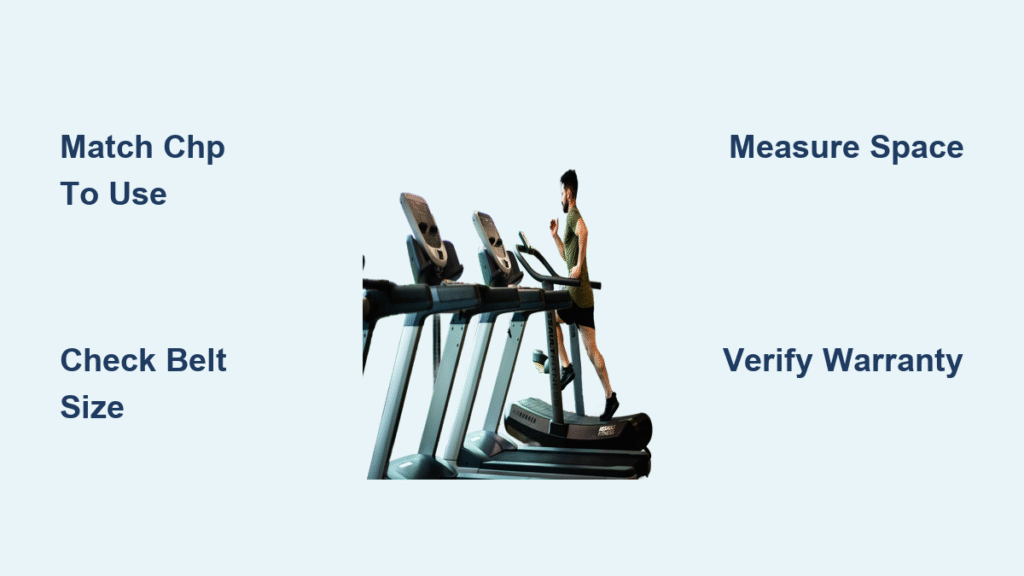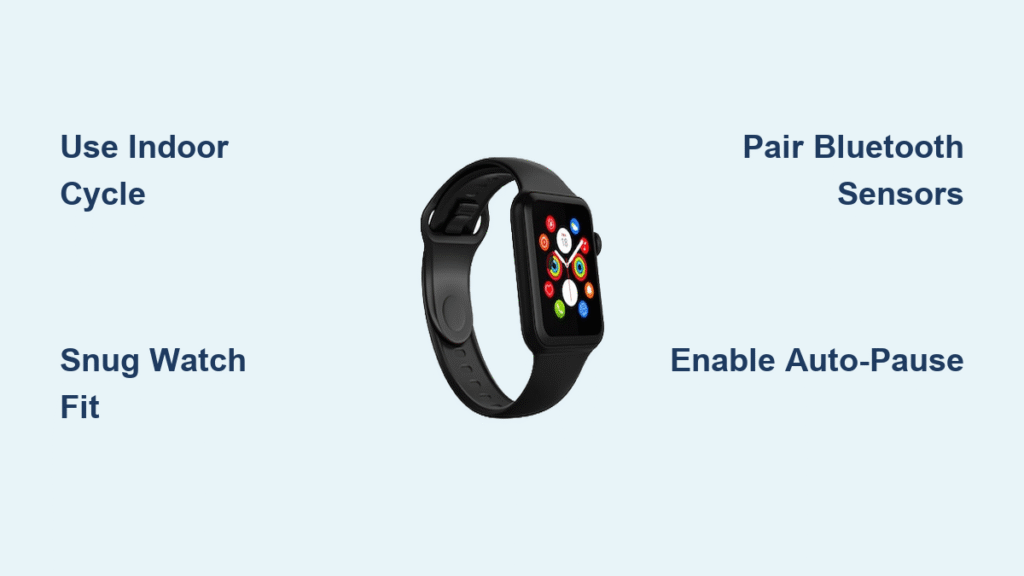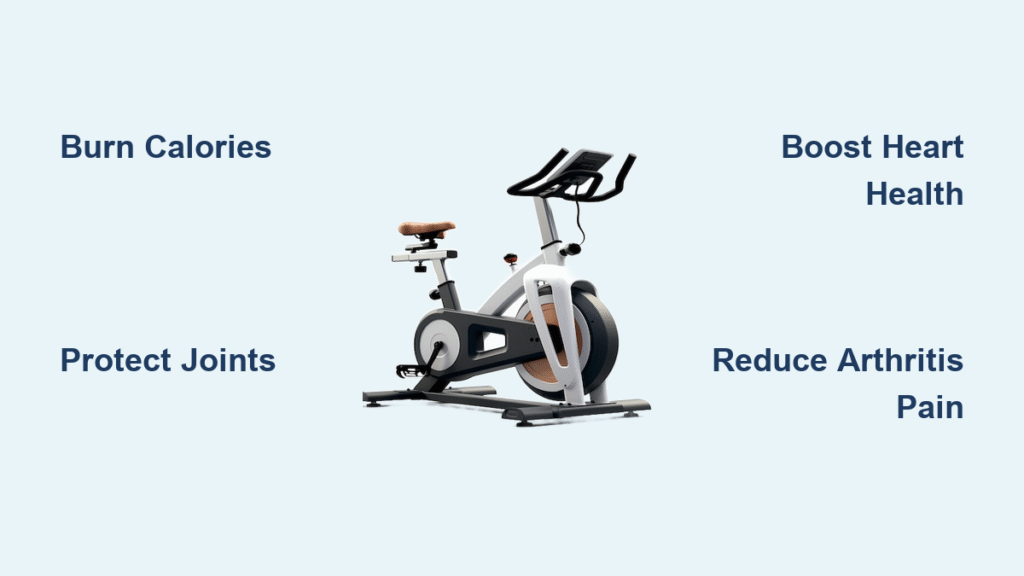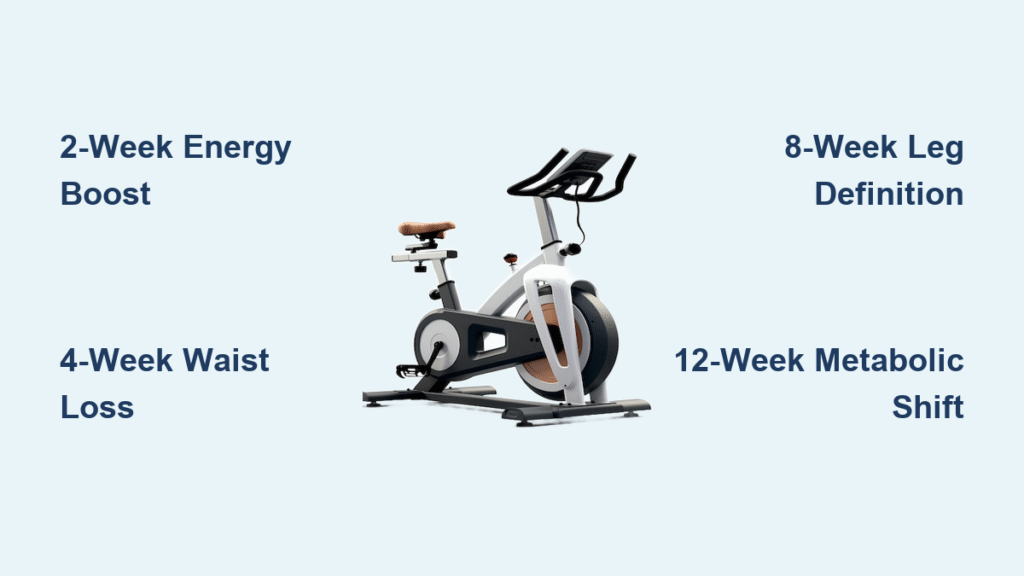Your treadmill just conked out mid-stride, or you’re finally ready to bring the gym home. Now you’re drowning in options: $300 folding pads that vanish under desks versus $4,000 commercial beasts with stadium-sized screens. Marketing jargon like “peak horsepower” and “cushioning tech” blurs together while sales pages scream “best treadmill ever!” The truth? Your perfect machine isn’t the priciest model—it’s the one that aligns with your height, weight, weekly mileage, and living room dimensions. This guide cuts through the fluff with lab-tested specs, real user pain points, and warranty fine print to get you running smarter. You’ll discover exactly how to choose a treadmill that won’t end up as an expensive clothes rack within a year.
Match Your Goals to Specs First

Your primary workout type eliminates 80% of unsuitable models immediately. Don’t waste time comparing marathon trainers if you’ll only walk during office calls.
Walking-Only Setups Need Minimal Specs
If you’re using it under a standing desk or for senior mobility, prioritize compactness over power. You need just 2.0 CHP (continuous horsepower) and a 50″ belt length—anything more is wasted money. Models like the WalkingPad C2 fold to 3 inches thick and cost under $500, but beware: their 18″ width feels claustrophobic if you naturally swing arms wide. Critical mistake: Buying a “runner’s treadmill” for walking. You’ll pay $1,000 extra for features you’ll never use, and the wider deck wastes precious floor space.
Joggers Require Mid-Tier Durability
For 3x weekly runs under 6 mph or weight-loss walking, target 2.5–3.0 CHP with a 55–60″ belt. The Horizon T101 ($649) nails this sweet spot with its 20″x55″ deck and 10% incline. Red flag: Sub-$800 models claiming “running capability.” Their 1-ply belts shred within 12 months of regular use. Budget $800–$1,200 here—you’ll gain lifetime frame warranties and reversible decks that double belt life.
Marathon Trainers Demand Commercial-Grade Build
Logging 50+ weekly miles? You need 3.5+ CHP, 60″x22″ belts, and 12+ mph top speeds. Tall runners over 6’2″ must get that extra 2″ width—otherwise, your toes will scrape the frame during incline sprints. The Sole F80 ($1,599) delivers with lifetime motor coverage, critical when your weekly mileage exceeds marathon distance. Pro tip: Add 0.5 CHP per 50 lbs over 200 lbs. A 250-lb runner needs 3.5 CHP minimum to avoid burning out motors.
Decode Motor Power Claims Like a Pro

Manufacturers hype “peak horsepower,” but only Continuous Horsepower (CHP) matters—it’s the power sustained during your 30-minute run.
Your Exact CHP Requirements
- 2.0 CHP: Strictly walking, users under 200 lbs
- 2.5 CHP: Light jogging 3x/week
- 3.0 CHP: Running 15+ miles weekly
- 3.5 CHP: Multi-user households or runners >200 lbs
Warning: If the spec sheet says “3.0 peak HP” without “CHP,” it’s marketing bait. Real-world testing shows these motors overheat at 5 mph. Always verify CHP in warranty terms—lifetime coverage means they trust the motor.
Belt Size Rules That Prevent Injury
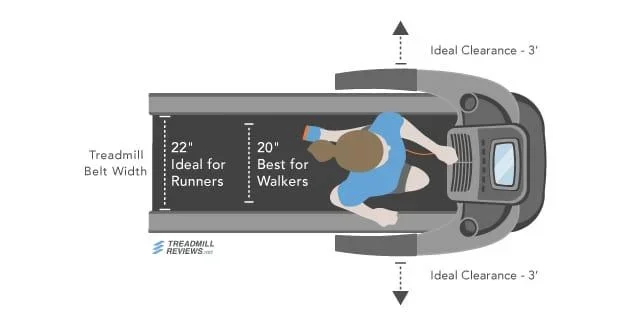
Wrong dimensions cause tripping, joint pain, and premature wear. Measure twice before buying.
Length Requirements by Height
| User Height | Walking | Jogging | Running |
|---|---|---|---|
| Under 5’6″ | 48″ | 55″ | 60″ |
| 5’6″–6’0″ | 50″ | 55″ | 60″ |
| Over 6’0″ | 52″ | 60″ | 63″ |
Visual cue: When running at top speed, your heel should never near the rear roller. If it does, you’re shortening your stride and risking Achilles strain.
Width Safety Margins
- 20″ belts work for narrow-stanced walkers
- 22″ belts prevent foot strike during 10%+ inclines
- Under-desk pads under 18″ wide become hazardous above 3 mph—your feet will drift off the edge.
Common mistake: Assuming “standard” 20″ width fits all. Wide-stance runners need 22″ decks even for walking to avoid constant correction.
Space Planning Beyond Footprint Measurements
That 77″x35″ treadmill actually needs 8×10 feet of clear space. Here’s why:
Ceiling Height Formula That Prevents Head Injuries
Step-up height + your height + 3 feet = minimum ceiling clearance
Most treadmills add 8–12 inches of step-up height. If you’re 6 feet tall in a 7-foot basement, incline training becomes a concussion risk. Measure with a tape measure before ordering.
Folding vs. Non-Folding Reality Check
Folding saves 44% floor space but adds 100+ lbs of lifting weight. The Sole F85’s hydraulic assist makes folding manageable solo, while budget folders like the ProForm 505 CST require two people—test this in-store if you’ll fold daily. Pro tip: If you can’t lift it comfortably today, you won’t in six months when novelty wears off.
Budget Breakdown: What You Actually Get
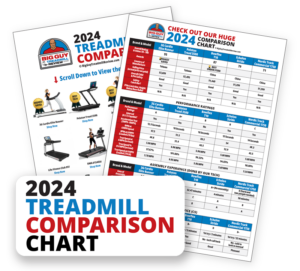
$500–$800 Range: For Walkers Only
Expect 2-ply belts, 2.25–2.5 CHP motors, and 90-day parts warranties. The Horizon T101 dominates here with Bluetooth and 10% incline—perfect for walkers replacing gym memberships. Avoid if you’ll run faster than 5 mph; the deck flexes dangerously.
$800–$1,500 Sweet Spot: Most Home Users
This tier unlocks 60″ belts, 3.0 CHP motors, and lifetime frame warranties. The Sole F63 ($999) includes commercial-grade rollers and reversible decks—features that last 5+ years with basic maintenance. You’re paying for reduced noise (under 70 dB) and shock absorption that protects knees.
$1,500+ Premium Tier: Marathoners Only
Touchscreens, decline training (-3%), and 4.0+ CHP motors appear here. The NordicTrack 1750 ($1,799) includes iFit, but factor in $39/month subscriptions. Hidden cost: These machines weigh 250+ lbs—white-glove delivery adds $150–$300.
Hidden Costs That Inflate Your “Real” Price
- Assembly: $150–$300 for white-glove service (non-negotiable for 200+ lb units)
- Subscriptions: iFit ($468/year) required for full functionality on smart treadmills
- Maintenance: Budget $50/year for lubricants on sub-$1,000 models
- Delivery: “Free shipping” often excludes stairs—verify thresholds before ordering
Worst-case scenario: A $1,200 treadmill costs $2,100 after subscriptions, assembly, and early belt replacement.
Warranty Translation Guide
Warranties reveal build quality better than spec sheets.
Lifetime vs. Marketing Lifetime
- Frame: Lifetime on mid-tier+ models (Sole, NordicTrack) vs. 10 years on budget brands
- Motor: Lifetime warranty = brushless, sealed motors—avoid anything under 5 years for running
- Parts: 2+ years indicates metal components vs. plastic in 90-day warranty machines
Critical void: Garage placement in climates with temperature swings. Condensation kills electronics—always store in climate-controlled rooms.
Test Before You Buy (Even Online)
In-Store Testing Checklist
- Belt stability: Run at top speed for 2 minutes—any lateral wobble means premature wear
- Noise levels: 70 dB or lower allows TV viewing (ask staff to measure with decibel app)
- Console reach: Grab a water bottle mid-stride—can you do it without breaking form?
- Emergency stop: Test safety key removal at 6 mph—it must halt within 2 seconds
Online Research Must-Dos
- Filter reviews to “most recent”—manufacturers fix flaws without model name changes
- Search “[model] belt replacement cost”—if parts are scarce, avoid it
- Check TrustPilot for warranty service response times
Pro tip: Order from manufacturers with 30-day in-home trials. NordicTrack and Sole offer this—retailers rarely do.
Quick Decision Matrix for Common Scenarios
| Your Priority | Best Budget Pick | Mid-Range Winner | Premium Choice |
|---|---|---|---|
| Small apartment | WalkingPad C2 ($499) | Horizon 7.0 AT ($999) | Sole F85 ($1,999) |
| Marathon training | — | Sole F80 ($1,599) | NordicTrack 2450 ($2,299) |
| Interactive classes | — | NordicTrack 1250 ($1,299) | Peloton Tread ($2,995) |
| Heavy user (300+ lbs) | — | Sole TT8 ($2,299) | LifeFitness T5 ($3,999) |
| Budget max $800 | Horizon T101 ($649) | — | — |
Key: Budget picks work for walkers only. Runners need mid-range or premium.
Final Purchase Flow (Print This)
- Define exact budget including delivery/assembly
- Measure space with safety clearances and ceiling height
- Profile user(s) by weight, height, and weekly mileage
- List non-negotiable specs from motor CHP to belt dimensions
- Choose tech level (basic LCD vs. subscription screen)
- Test top 3 models in-store if possible
- Buy online using manufacturer coupons (often 10–15% off)
- Register warranty and perform first lubrication within 30 days
The treadmill market rewards informed buyers. Spend 30 minutes with this guide, and you’ll avoid the $1,200 mistake of buying a walking treadmill for marathon training—or worse, a running machine that won’t fit through your doorway. Your next step: Grab your tape measure and user profile data to filter current deals. The right treadmill is waiting—you now know exactly how to choose a treadmill that fits your life.

